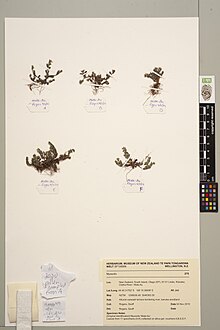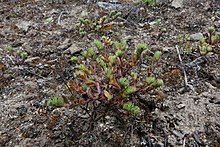
Myosotis pansasubsp. pansa, also known as the Waitakere forget-me-not, is a subspecies of flowering plant in the family Boraginaceae, endemic to the North Island of New Zealand. Lucy Moore described the variety M. petiolata var. pansa in 1961, and it was transferred to a subspecies of M. pansa by Heidi Meudt, Jessica Prebble, Rebecca Stanley and Michael Thorsen in 2013. Plants of this species of forget-me-not are perennial rosettes with ebracteate inflorescences and white corollas with exserted stamens.

Myosotis antarctica is a species of flowering plant in the family Boraginaceae, native to mainland New Zealand, Campbell Island and southern Chile. Joseph Dalton Hooker described the species in his 19th century work Flora Antarctica. Plants of this species of forget-me-not are perennial with a prostrate habit, bracteate inflorescences, and white or blue corollas. It is one of two native species of Myosotis in the New Zealand subantarctic islands, the other being M. capitata, which also has blue corollas.

Myosotis chaffeyorum is a species of flowering plant in the family Boraginaceae, endemic to the South Island of New Zealand. Carlos Lehnebach described the species in 2012. Plants of this species of forget-me-not are perennial with a creeping habit, bracteate inflorescences, and white corollas.

Myosotis bryonoma is a species of flowering plant in the family Boraginaceae, endemic to the South Island of New Zealand. Heidi Meudt, Jessica Prebble and Michael Thorsen described the species. Plants of this species of forget-me-not are perennial with a creeping habit, bracteate inflorescences, and white corollas.
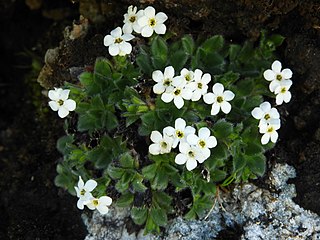
Myosotis retrorsa is a species of flowering plant in the family Boraginaceae, endemic to the South Island of New Zealand. Heidi Meudt, Jessica Prebble and Rowan Hindmarsh-Walls described the species. Plants of this species of forget-me-not are perennial with a prostrate habit, bracteate inflorescences, and white corollas.
Myosotis umbrosa is a species of flowering plant in the family Boraginaceae, endemic to the South Island of New Zealand. Heidi Meudt, Jessica Prebble and Michael Thorsen described the species. Plants of this species of forget-me-not are perennial with a prostrate habit, bracteate inflorescences, and white corollas.

Myosotis albiflora is a species of flowering plant in the family Boraginaceae, native to southern Chile and Argentina. This species was described by Joseph Banks and Daniel Solander in Joseph Dalton Hooker's 19th century work Flora Antarctica. Plants of this species of forget-me-not are perennial and have white corollas. It is one of two native species of Myosotis in southern South America, the other being M. antarctica.

Myosotis cheesemanii is a species of flowering plant in the family Boraginaceae, endemic to the South Island of New Zealand. Donald Petrie described the species in 1886. Plants of this species of forget-me-not are perennial rosettes with bracteate inflorescences and white corollas.

Myosotis matthewsii is a species of flowering plant in the family Boraginaceae, endemic to the North Island of New Zealand. Lucy Moore described the species in 1961. Plants of this species of forget-me-not are perennial rosettes with bracteate inflorescences and white corollas.

Myosotis pulvinaris is a species of flowering plant in the family Boraginaceae, endemic to the South Island of New Zealand. Joseph Dalton Hooker described the species in 1867. Plants of this species of forget-me-not are perennial with a prostrate, compact, cushion habit, short bracteate inflorescences, and white corollas.
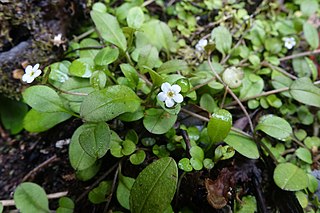
Myosotis tenericaulis is a species of flowering plant in the family Boraginaceae, endemic to New Zealand. Donald Petrie described the species in 1918. Plants of this species of forget-me-not are perennial rosettes with creeping, sprawling bracteate inflorescences and white corollas.
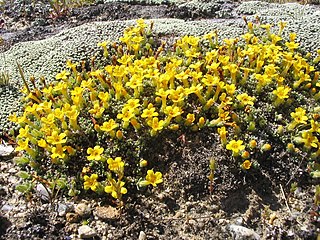
Myosotis uniflora is a species of flowering plant in the family Boraginaceae, endemic to the South Island of New Zealand. Joseph Dalton Hooker described the species in 1867. Plants of this species of forget-me-not are perennial with a prostrate, compact, cushion or mat habit, short bracteate inflorescences, and cream to yellow corollas.
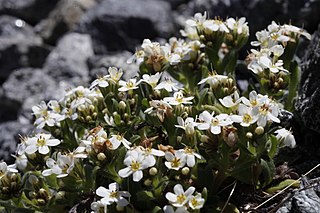
Myosotis lyallii is a species of flowering plant in the family Boraginaceae, endemic to New Zealand. Joseph Dalton Hooker described the species in 1853. Plants of this species of forget-me-not are perennial with a prostrate habit, bracteate or partially-bracteate inflorescences, and white corollas.

Myosotis lyalliisubsp. elderi is a subspecies of flowering plant in the family Boraginaceae, endemic to New Zealand. Lucy Moore described Myosotis elderi in 1961, and Heidi Meudt and Jessie Prebble treated it as a subspecies of M. lyallii in 2018. Plants of this subspecies of forget-me-not are perennial with a prostrate habit, bracteate inflorescences, and white corollas with partially exserted anthers.
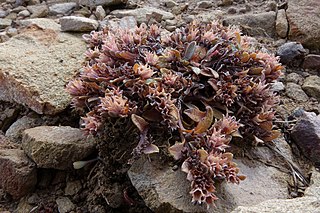
Myosotis glauca is a species of flowering plant in the family Boraginaceae, endemic to the South Island of New Zealand. George Simpson and J.S. Thomson described M. pygmaea var. glauca in 1942, and Peter de Lange and John Barkla recognized it at species rank in 2010. Plants of this species of forget-me-not are perennial with a prostrate habit, bracteate inflorescences, white corollas, and often glaucous grey leaves.

Myosotis brevis is a species of flowering plant in the family Boraginaceae, endemic to New Zealand. George Simpson and J.S. Thomson described M. pygmaea var. minutiflora in 1942, and Peter de Lange and John Barkla recognized it at species rank in 2010, as M. brevis. Plants of this species of forget-me-not are small and annual, with a prostrate habit, bracteate inflorescences, tiny white corollas, and brown or green leaves.

Myosotis venticola is a species of flowering plant in the family Boraginaceae, endemic to the South Island of New Zealand. Heidi Meudt and Jessica Prebble described M. venticola in 2022. Plants of this forget-me-not are perennial with bracteate and prostrate inflorescences, and small, white corollas with partly exserted stamens.
Myosotis ultramafica is a species of flowering plant in the family Boraginaceae, endemic to the South Island of New Zealand. Heidi Meudt, Jessica Prebble and Brian Rance described M. ultramafica in 2022. Plants of this forget-me-not are perennial with bracteate and prostrate to ascending inflorescences, and small, white corollas with partly exserted stamens. This species is Naturally Uncommon and only found on ultramafic substrates.

Myosotis pansa is a species of flowering plant in the family Boraginaceae, endemic to the North Island of New Zealand. Lucy Moore described the variety M. petiolata var. pansa in 1961, and it was raised to species level as M. pansa by Heidi Meudt, Jessica Prebble, Rebecca Stanley and Michael Thorsen in 2013. Plants of this species of forget-me-not are perennial rosettes with ebracteate inflorescences and white corollas and exserted anthers.
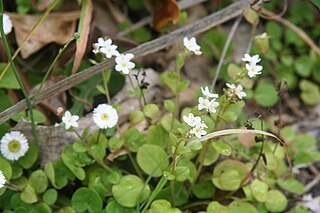
Myosotis pansa subsp. praeceps is a subspecies of flowering plant in the family Boraginaceae, endemic to the North Island of New Zealand. Lucy Moore described the variety M. petiolata var. pansa in 1961, and it was transferred to a subspecies of M. pansa by Heidi Meudt, Jessica Prebble, Rebecca Stanley and Michael Thorsen in 2013. Plants of this species of forget-me-not are perennial rosettes with partially bracteate inflorescences and white corollas with exserted stamens.


